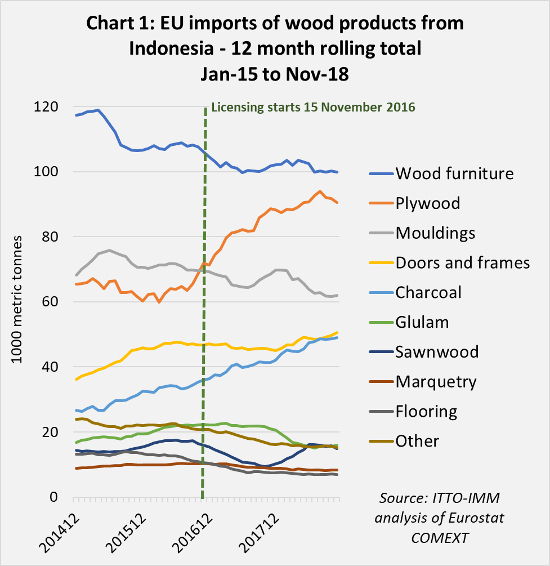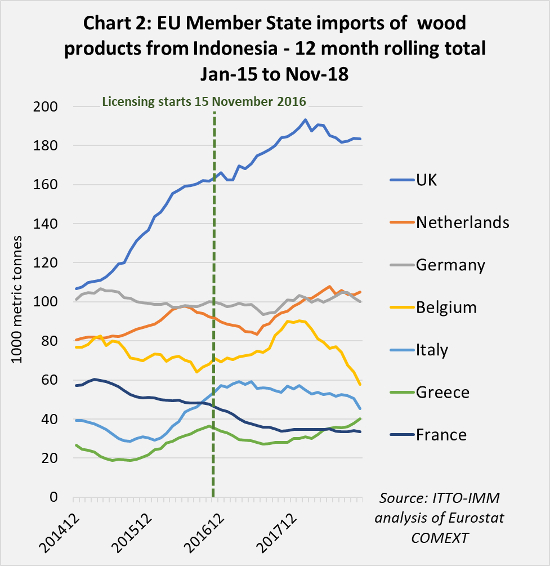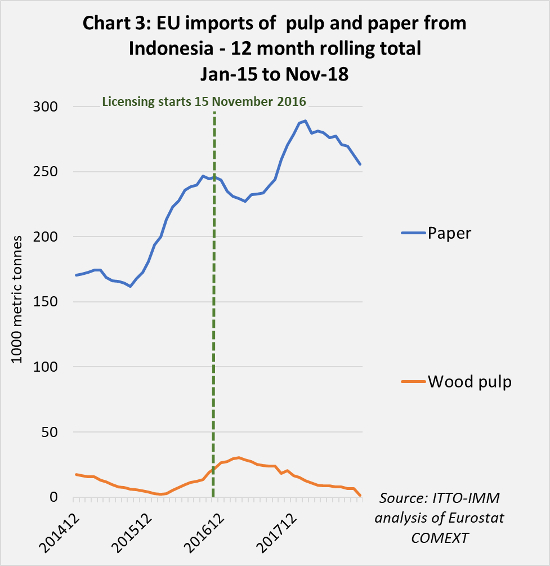The EU imported 422,000 metric tonnes (MT) of wood products from Indonesia in the year ending November 2018 compared to 414,000 MT in the year ending November 2017. In value terms, EU imports from Indonesia increased from €786 million to €794 million in the same period. As the € strengthened against the US currency during this period, the increase in dollar value was even more significant, from US$864 million to US$934 million.
During 2018, a rise in EU imports of Indonesian plywood, charcoal, doors, and S4S sawnwood offset a decline in imports of mouldings/decking, laminated wood, marquetry, flooring and other processed products. EU imports of Indonesian wood furniture remained broadly flat in 2018. (Chart 1).
Imports of Indonesian wood products increased in the Netherlands and Greece and remained high in the UK in 2018. Imports were broadly flat last year in Germany and France but declined sharply in Belgium and Italy. (Chart 2).
 |
 |
In total, the EU imported 257,000 MT of pulp and paper products from Indonesia in the year ending November 2018, a decline compared to 291,000 MT in the year ending November 2017. However, in value terms, EU imports from Indonesia increased from €222 million to €253 million in the same period. In dollar terms, the value increased from US$245 million to US$298 million.
After a sharp increase in the last quarter of 2017, the tonnage of EU imports of Indonesian paper products slowed in 2018. EU imports of pulp from Indonesia had returned to negligible levels by the end of 2018 after a brief surge in imports in the second half of 2016 and early 2017. (Chart 3).
Imports of Indonesian pulp and paper products increased sharply in the UK and Belgium in the second half 2017 but slowed sharply in 2018. Imports of these products in Italy increased sharply in 2016 but have been sliding since then. Imports in Greece, Romania, Spain, and Germany were rising in 2018 after a dip in 2017. (Chart 4).
 |
 |
